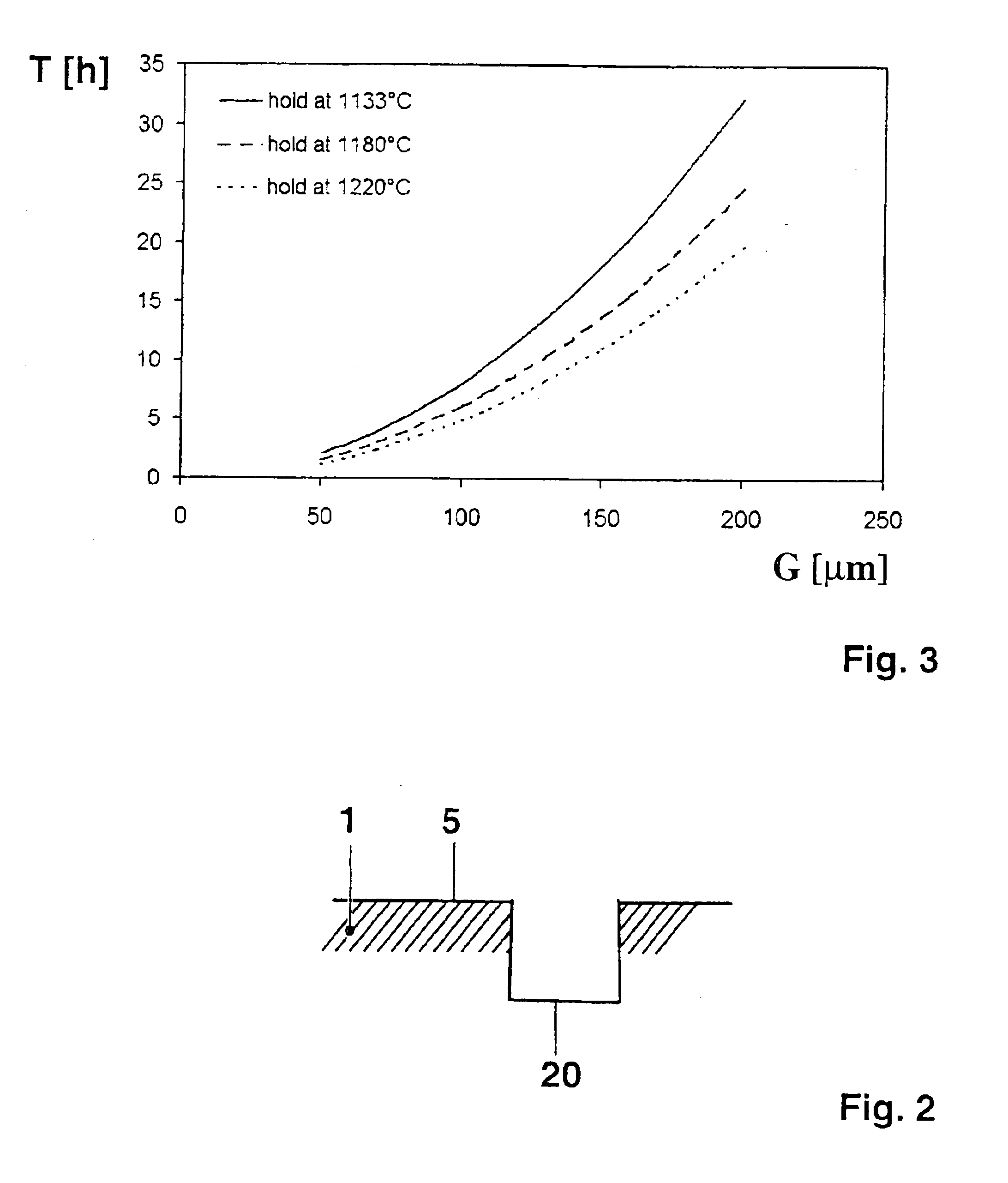Method for fabricating, modifying or repairing of single crystal or directionally solidified articles
a technology of directionally solidified and sx, which is applied in the direction of machine/engine, manufacturing tools, and solventing apparatus, etc., can solve the problems of limiting the applicability of this otherwise useful process, complex process, and only feasible reconditioning of such components
- Summary
- Abstract
- Description
- Claims
- Application Information
AI Technical Summary
Benefits of technology
Problems solved by technology
Method used
Image
Examples
Embodiment Construction
[0023]FIG. 1 shows a single crystal (SX) or directionally solidified (OS) article 1 such as blades or vanes of gas turbine engines, the gas turbine blade comprising a root portion 2, a platform 3 and a blade 4 and having a surface 5. The article 1 can as an example be made from a nickel or cobalt based super alloy. Investment casting methods for producing such SX or DS articles are known e.g. from the prior art U.S. Pat. Nos. 4,960,501, 3,690,367 or EP-A1-0 749 790. These articles 1 are normally made from a nickel or cobalt base super alloy.
[0024]The herein disclosed method can be used for fabricating, modifying or repairing of such single crystal (SX) or directionally solidified (DS) articles 1. Thereby in a first step of the inventive method two single crystal (SX) or directionally solidified (DS) prefabricated parts are joint together by using an iso-thermal brazing operation with a brazing material. According to FIG. 2 where a gap 20 or crack of the surface 5 of gas turbine arti...
PUM
| Property | Measurement | Unit |
|---|---|---|
| temperatures | aaaaa | aaaaa |
| temperature | aaaaa | aaaaa |
| mass | aaaaa | aaaaa |
Abstract
Description
Claims
Application Information
 Login to View More
Login to View More - R&D
- Intellectual Property
- Life Sciences
- Materials
- Tech Scout
- Unparalleled Data Quality
- Higher Quality Content
- 60% Fewer Hallucinations
Browse by: Latest US Patents, China's latest patents, Technical Efficacy Thesaurus, Application Domain, Technology Topic, Popular Technical Reports.
© 2025 PatSnap. All rights reserved.Legal|Privacy policy|Modern Slavery Act Transparency Statement|Sitemap|About US| Contact US: help@patsnap.com



